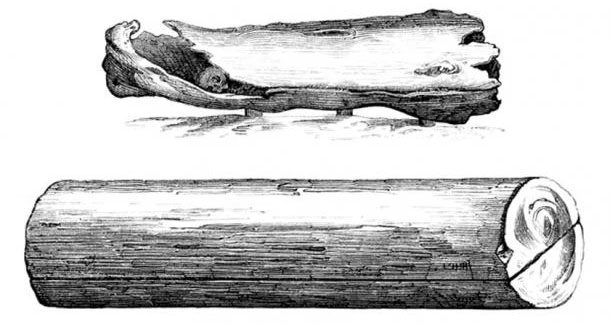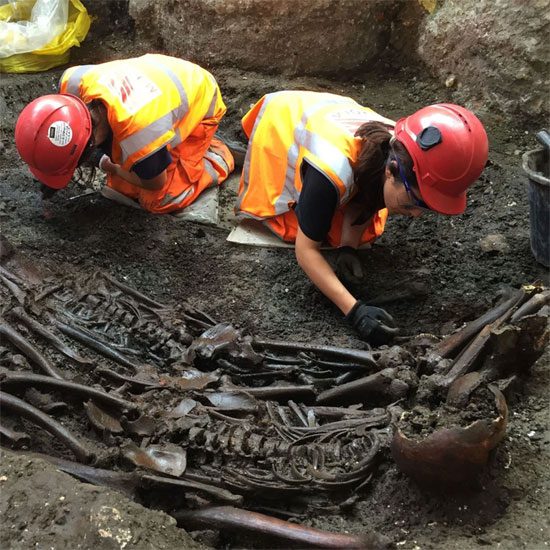England has always been a place that preserves countless legends from the Middle Ages, particularly the tale of King Arthur and the skeleton of the giant from Glastonbury.
The Remains of King Arthur’s Giant Skeleton
Glastonbury Abbey, located in Somerset, England, is a treasure trove of history, religion, and famous mythology. It is believed that the first Christian church in England was established here by Joseph of Arimathea, the legendary keeper of the Holy Grail.
However, another legend tells of a secret held by the local priests. They discovered a skeleton and believed it to be that of the long-lost King of England in 1190. They claimed that King Henry II ordered the excavation to a depth of 7 feet (approximately 2.1 meters) in Somerset, England.
Right between two ancient pyramid-shaped stone columns, they found a lead cross inscribed with the words:
”HIC JACET SEPULTUS INCLYTUS REX ARTURUS IN INSULA AVALLONI” (Translated: “Here lies buried the renowned King Arthur on the Isle of Avalon”).
This discovery spurred archaeologists to seek evidence of the existence of the legendary king. After digging deep and exploring, they unearthed a gigantic coffin made from an ancient oak tree.
Inside the coffin, experts discovered the skeleton of a man nearly 9 feet tall (almost 3 meters), lying next to the skeleton of an average-sized woman, believed to be King Arthur’s wife, Guinevere at that time. The astonishing skeleton, measuring close to 3 meters, is considered evidence of a long-lost race of giants.

Medieval Wooden Coffin. (Image: Erica Guilane-Nachez).
Experts’ Doubts
After the remains of King Arthur and Guinevere were placed in the church, Glastonbury’s influence on the legends of King Arthur persisted over time. The tomb believed to be the burial site of King Arthur was examined, but the skeleton and the cross were lost after the abbey closed in 1539.
Analysis of the abbey has raised objections. Some claim that the king is still buried somewhere. This has led to speculation: The priests may have used the historical reputation of the site for their own gain.
Many believe that the cross was merely a hoax. The legend of the skeleton was just a tool used by the monks to gain fame and solicit donations from the nobility to support the sacred site where the remains of one of England’s greatest legends were laid to rest.

Giant Skeleton. (Image: My London).
Confirmation of the Giant’s Presence
Archaeologist Ralegh Redford claimed to have identified the burial site he excavated around the 1950s and 1960s, but there is little evidence to prove that this is indeed the legendary king.
Although the discovery of the tombstone believed to be Arthur’s remains has not been verified, the finding of a giant figure is indisputable. The famous historian Giraldus Cambrensis personally examined the giant bones in 1194 and declared them authentic.
Centuries later, in 1962-1963, archaeologist Dr. Ralegh Radford claimed to have identified the burial site of King Arthur. Professor Gilchrist argued: “Radford may have exaggerated his evidence. A reevaluation of his excavation records shows it was merely a hole in a cemetery, dating from the 11th to the 15th century of an unidentified individual.”
Nonetheless, whether this skeleton is that of the legendary King Arthur or not, one thing is certain: The bones of a giant man nearly 3 meters tall were excavated at Glastonbury nearly 1,000 years ago.





















































